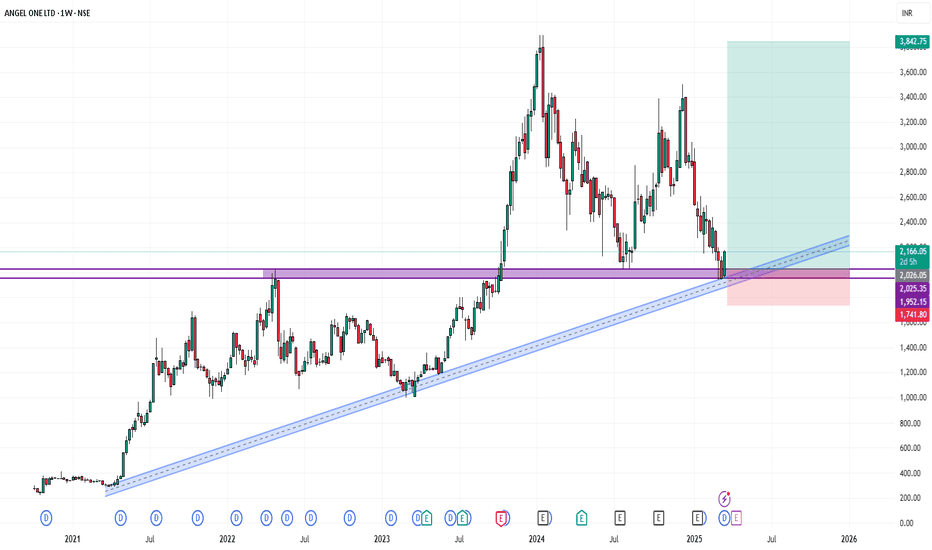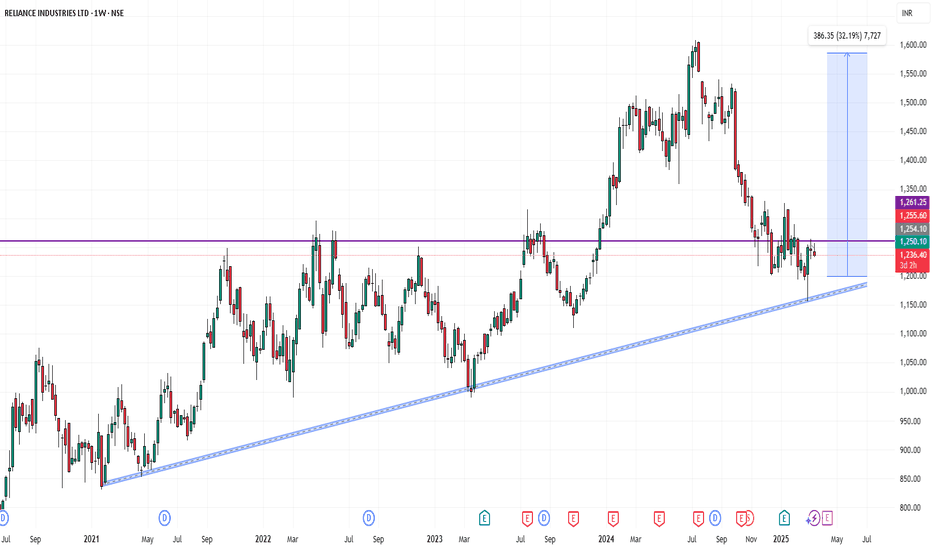mrsameofficial
ANGELONE 's stock price has been retesting around the 2000 resistance level for approximately two and half years. Following multiple retest, the stock finally broke out above this level in October 2023 and has since established it as a key support. The stock subsequently surged to a peak of 3895, representing a 87% increase. However, it then experienced a sharp...
📈 Reliance Industries Breakout Alert – ₹1241 Key Level Breached 🚀 Reliance Industries has successfully broken out above a strong resistance zone near ₹1241, indicating a potential bullish move ahead. This level acted as a critical supply zone in the past, and the breakout with volume confirmation adds strength to the trend. 🔍 Technical Highlights: Breakout...
📊 Price Action & Trend Analysis Analyzing market trends using price action, key support/resistance levels, and candlestick patterns to identify high-probability trade setups. Always follow the trend and manage risk wisely! Price Action Analysis Interprets Market Movements Using Patterns And Trends On Price Charts.
- The chart is self-explanatory as always. - JIOFIN is reaching its ATL. - The stock is down 40% since it started its downward trajectory. - JIOFIN is to be added to Nifty50 by March end -The company reported a slight 0.32% increase in consolidated net profit for Q3 FY25, with earnings of Rs 294.78 crore compared to Rs 293.82 crore in the same period last year....
Support is a price point below the current market price that indicate buying interest. Resistance is a price point above the current market price that indicate selling interest.
The 50-day exponential moving average (EMA) offers the most popular variation, responding to price movement more quickly than its simple minded cousin. This extra speed in signal production defines a clear advantage over the slower version, making it a superior choice
'Support' and 'resistance' are terms for two respective levels on a price chart that appear to limit the market's range of movement
Fibonacci Trend Line Strategy uses Fibonacci Retracement and Trend Lines to find profit zones. Become a Fibonacci expert!
Support/Resistance Level - Traders often perceive the 200-day moving average level as a strong support or resistance level. These levels can indicate the right time and opportunity to buy or sell an investment. For example, traders can explore selling opportunities as the 200-day moving average line is breached
A trendline is a line drawn over pivot highs or under pivot lows to show the prevailing direction of price. Trendlines are a visual representation of support and resistance in any time frame. They show direction and speed of price, and also describe patterns during periods of price contraction
The sideways market occurs when the price of a stock or security stays within a given range (between the support and resistance) for a long period of time, arriving at somewhat of a horizontal line on the graph if you were to, for example, chart a 200 day moving average for instance
A trendline is a line drawn over pivot highs or under pivot lows to show the prevailing direction of price. Trendlines are a visual representation of support and resistance in any time frame. They show direction and speed of price, and also describe
A trendline is a line drawn over pivot highs or under pivot lows to show the prevailing direction of price. Trendlines are a visual representation of support and resistance in any time frame. They show direction and speed of price, and also describe patterns during periods of price contraction
The 200-day moving average is a main indicator that tells traders and investors the average closing price of a stock which is observed over 200 days. There are moving averages that span different periods based on their purpose for traders and investors.
The term 'sideways market' refers to a phenomenon when there are no clear trends found in the market. Instead, prices are rising and falling, sometimes sharply, but not in any consistent direction. Sideways markets are typically volatile and indecisive.
groups of patterns: continuation, reversal, and bilateral. Some traders classify ascending, descending, and symmetrical triangles in a
For instance, if the 200-day moving average trend line moves up, traders may just go long if prices deflect off trend lines that double as support levels. In such a case, a trader may hope that prices could bottom out and then likely rise with the trend going up.
The trend mentioned here refers to the long-term trend of the given security. Stock traders use the 200 day moving average charts for finding the right opportunity to buy or sell an investment. For example, if the stock's price is trading above the 200-day moving average line, they may look for buying opportunities








































